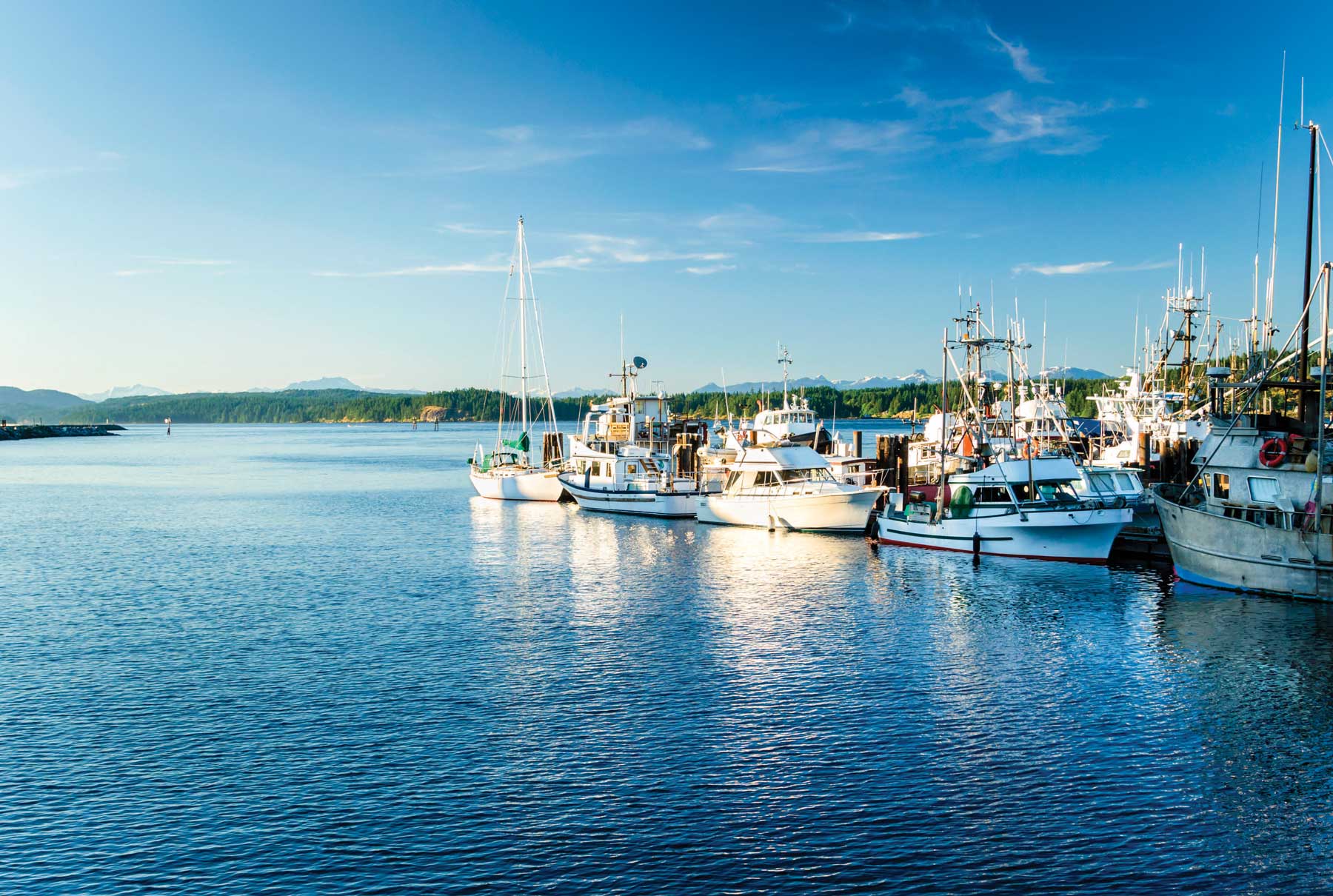AT 50° N, Campbell River lies right in the middle of Vancouver Island’s east coast, roughly 162 miles from the northern tip and the same distance south to Race Rocks. The town stretches along Discovery Passage, a channel that begins at the top of the Strait of Georgia and is often called the “Gateway to the Inside Passage.”
Approaching Campbell River takes planning. Discovery Passage is the westernmost waterway leading north. It lies between Vancouver and Quadra islands and its tidal runs can reach 11 knots. I remember one year we entered Seymour Narrows at the south end of Discovery Passage, having made a rendezvous with a friend at one of Campbell River’s marinas at a specific time. The visit was organized weeks before our arrival, but we’d not looked closely at the tide book. At full power, our sailboat’s 55-horsepower engine struggled to maintain barely 1.5 knots against the flood tide rushing south—a good reminder to read the tide tables well before you make appointments. It’s recommended you sail this passage near or at slack water. On the way, we paid tribute to the former Ripple Rock, a seamount whose nefarious peaks and whirlpools tore 100 hulls and drowned 114 souls before it was finally packed with explosives in 1958. The resulting explosion is still one of the largest non-nuclear blasts in the world.
Campbell River—the third largest town on Vancouver Island with a population of about 37,000—calls itself the “salmon capital of the world.” In past decades, the salmon runs were so abundant they led to the development of the Tyee Club in 1924. The club, which will see its 100th anniversary in three years, still operates in Campbell River and includes a group of anglers—some are rich and famous—who return to Campbell River each year to catch a “Tyee.” That term refers to a chinook or spring salmon weighing 30 pounds or more; in the Nuu-chah-nulth language, it means “chief” or “champion.” Tyee Club anglers can only use rowboats to catch their prize fish—no engines allowed.
It was Irish-born Samuel Campbell, the assistant surgeon aboard Captain George Richards’ Hecate and Plumper, whose name was bestowed on the river, and later, on the town. Richards surveyed the area for the Royal Navy in the late 1850s.
The river, which originates in Vancouver Island’s Elk River Mountain Range, has been a rich salmon spawning ground—a fact well-known to the Laich-Kwil-Tach First Nation who lived in their permanent villages of Tlamatook (Campbell River) and Tsa-kwa-luten—today’s Quadra Island and its southern tip, Cape Mudge. Archeological digs have revealed middens and historic artifacts attesting to millennia of occupation. Fear that the US would appropriate the region led Vancouver Island’s first governor, James Douglas—and those that followed him—to send European settlers to the area beginning around 1850. By the 1890s, the riches to be gained from logging the huge forests enticed the Thulin brothers, Swedes who’d established a fuelling station in Lund, to take advantage of the government offer of 160 free acres. These include the land that Campbell River sits on today. First Nations were excluded from this form of government largesse.
Fishermans Wharf
Campbell River has no natural harbour and that’s why, from a bird’s-eye view (or today’s drone), you see fat curved arms reaching into Discovery Passage. They are the massive rock breakwaters surrounding the marinas providing berths for the large fishing fleet and including permanent and transient moorage for pleasure craft. Sailing from the south, you’ll first find the Campbell River Harbour Authority and Fishermans Wharf. It offers transient moorage to visiting yachts, monitors VHF 66A, provides up to 100-amp power, pumpout and the usual washrooms, showers and wifi. During the busy season, rafting may be required. Food is nearby and tasty. On the wharf, Crabby Bob’s can serve or sell you fresh fish and crabs—even a seafood charcuterie plate caught by local fishermen.
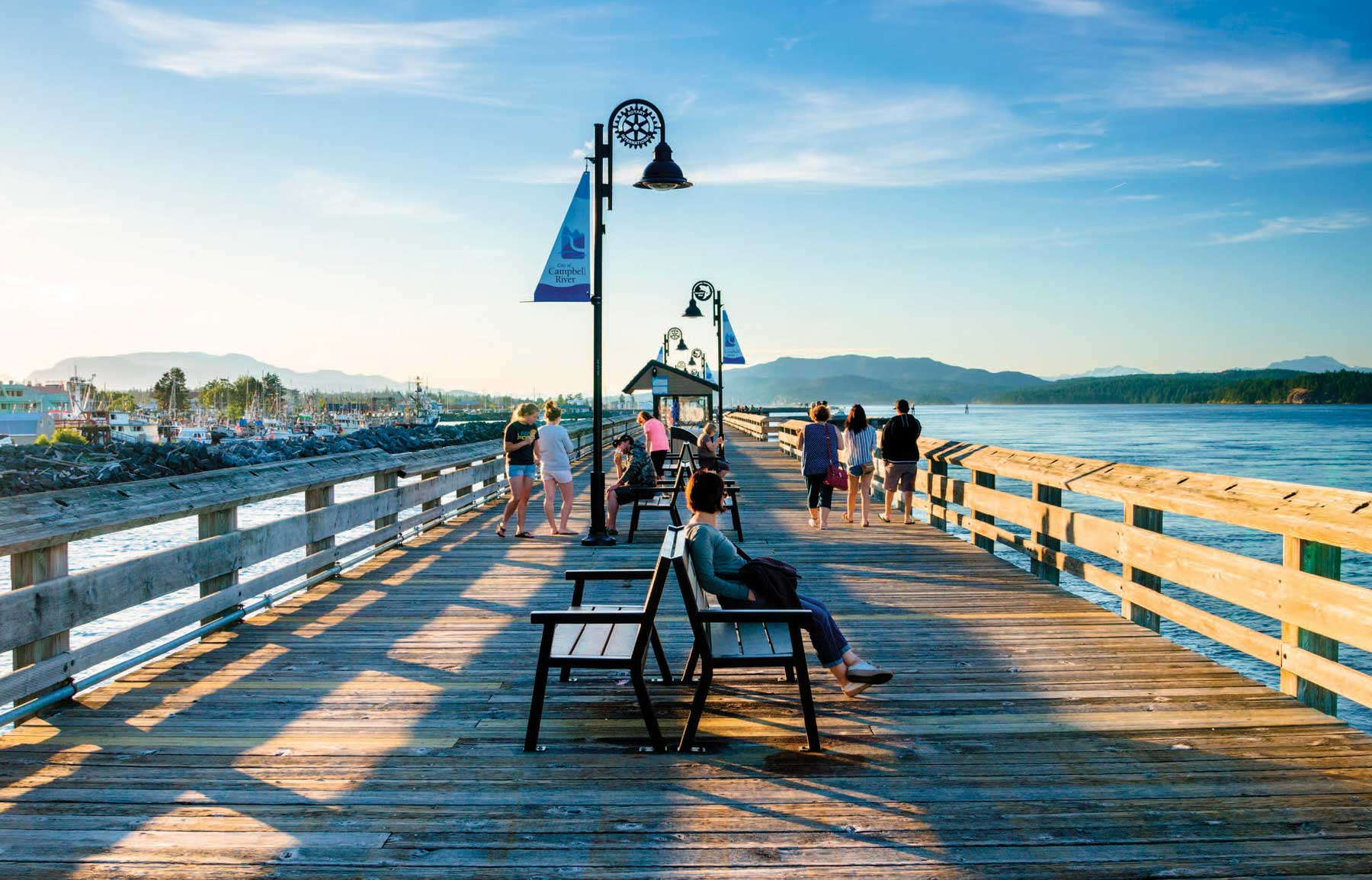
The wharf’s Discovery Fishing Pier, a long wooden structure located just outside the breakwater, is a great place to stretch your legs. It allows you to gaze out over the passage either walking or seated on the plentiful benches and single seats. At the entry, a shop sells ice cream; a highly popular stop on the 29°C day when I strolled the pier. A mom and small daughter were enjoying a turquoise ice-cream cone, while a lone pensioner contentedly contemplated the water and the travelling vessels. Throughout the pier’s handrails, holes have been drilled to hold fishing poles.
Near the pier, the Discovery Passage Aquarium, although a small facility, teaches people about local marine life. A mom and dad with their three tow-headed children were gingerly fingering spiny sea urchins resting on kelp leaves in a touching pool. Sea stars and sea cucumbers occupied the next saltwater pool. I never knew a giant rock scallop shell could cover most of a dinner plate. I was also introduced to northern feather duster worms, a tube worm with maroon-coloured flowery heads that are actually clusters of branched tentacles that feed on plankton. Their plant-like arms remind us of the complexity, diversity and beauty of the animal world.
Coast Marina
A bit farther north, you’ll find the Coast Marina. Again, it monitors 66A, and offers the standard amenities like power, water, showers, free wifi and laundry nearby. Its manager, too, warned about pent-up demand for transient berths and thus reservations are strongly recommended—and I was there before the border opened to American yachts! You can get a meal at the licensed Dockside Fish & Chips, which also serves burgers and tasty chowders. Fishing charters and whale and bear watching tours can also be booked at the marina.
The Discovery Harbour Marina is the largest and northernmost place to berth. It offers power, water, mobile pumpout, laundry, washrooms, wifi and fuel. It can also handle megayachts. The Campbell River Indian Band, as they call themselves, manages and operates the marina, filled with a mix of fishboats and all sizes of pleasure craft. There is also a boat launch just north of the marina.
At the dock’s main gate, with its logo of a thunderbird grasping a salmon in its beak, I noted the marina was flying the Canadian Native Flag, designed in Campbell River by Curtis Wilson; the flag has become very popular.
I ran into CJ, as he identified himself, a sport fishing guide. “Campbell River is known worldwide as the sport fishing capital of the world,” I said. “Can you tell me if that’s still true?” He smiled and waved his hands around. “It depends on the day. Some are fantastic, some are a bust. But personally, I don’t care. I guide on weekends only.” He then revealed that during the week, he drives a school bus.
When I spoke with Discovery Harbour Marine Services supervisor Brad Drake, he told me the marina had no room for transients that weekend. “We’re full. Not even hot berthing” (the term is used for the slips permanently moored boats have temporarily left empty). So, it’s best to call ahead to reserve your slip.
I went walking through the gigantic adjoining Discovery Harbour Shopping Centre located on the territory of the Wei Wai Kum First Nations people—who also manage the marina. The project resulted from a collaboration of this First Nation with the developer, the Northwest Group. It’s why throughout the centre, we find Indigenous designs and motifs on buildings and storefronts. It’s the largest conglomerate of stores in the region and contains a mix of big box stores like the Real Canadian Superstore, Canadian Tire and Staples. Ocean Pacific Marine, a marine supply store with a haul-out yard, clothing emporiums, a cannabis shop, fast food places, even a place to get your hair cut, occupy space here. The Weiwaikum House of Treasures supports regional Indigenous artists, displaying a dazzling array of quality carvings, jewelry, knitted and other clothing and modern ceramics featuring traditional Indigenous motifs.
My feet had wearied so I popped into the Riptide Marine Pub (other restaurants include Moxie’s and Harbour Grill) and treated myself to crispy calamari and some sinful fries. Delicious.
Refreshed, I visited a totem park just outside the shopping complex. One that draws particular attention is a ceremonial pole dedicated to celebrated local Kwakwaka’wakw artist Curtis Wilson, who designed the Native Canadian Flag. The flag’s maple leaf encompasses an orca and the red side bands contain stylized salmon. Wilson died suddenly of a heart attack at the age of 39. His ceremonial pole also includes his Kwakwaka’wakw name “Mulidzas” in large letters.
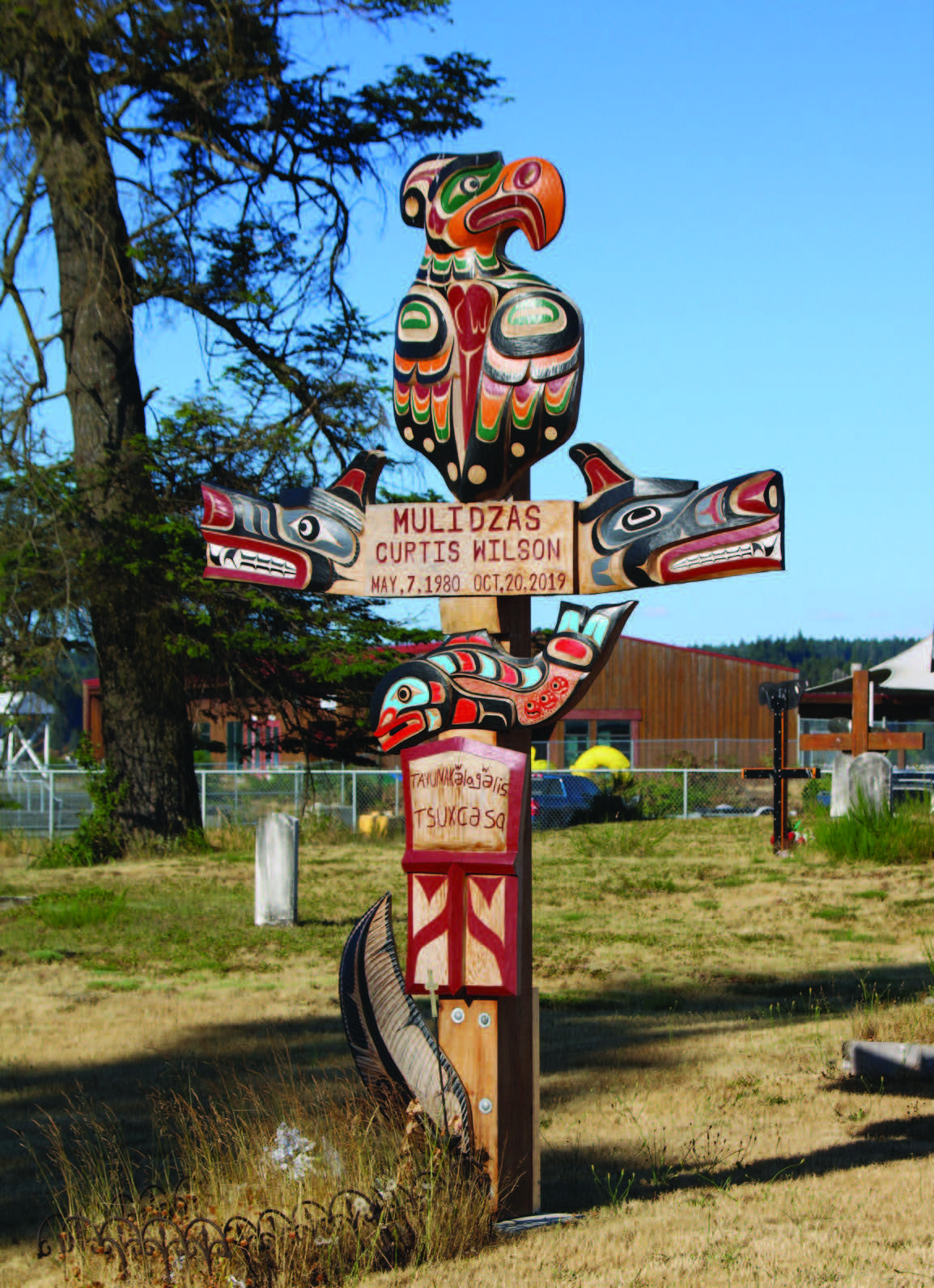
I’d hoped to see the original BC Packers #45, a seiner owned by former Kwagiulth Chief Harry Assu of Cape Mudge Village. This fishboat, from a photograph taken during a huge 1958 sockeye salmon run, became famous for formerly gracing the back of our paper five-dollar bill—now replaced by durable polymer bills. Today, the restored fishboat is housed at the attractive Maritime Heritage Centre, but it’s not open to the public at present. A staff member told me the pandemic has caused an income shortfall and the centre is temporarily closed.
Fortunately, the Campbell River Museum, one of the best small museums I have visited, was open. The distance between the Discovery Harbour Marina and the museum is 2.5 kilometres, reachable on foot, or by bike or taxi. Outside the museum stands a huge, boldly painted Thunderbird Bear Pole, inspired by a Sam Henderson pole from the 1960s, and carved by Sam’s son Bill Henderson and grandsons Junior, Greg and Will. A thunderbird with outstretched wings sits above a bear holding a small man. Next to the pole, a vintage steam donkey represents part of Campbell River’s rich logging history.
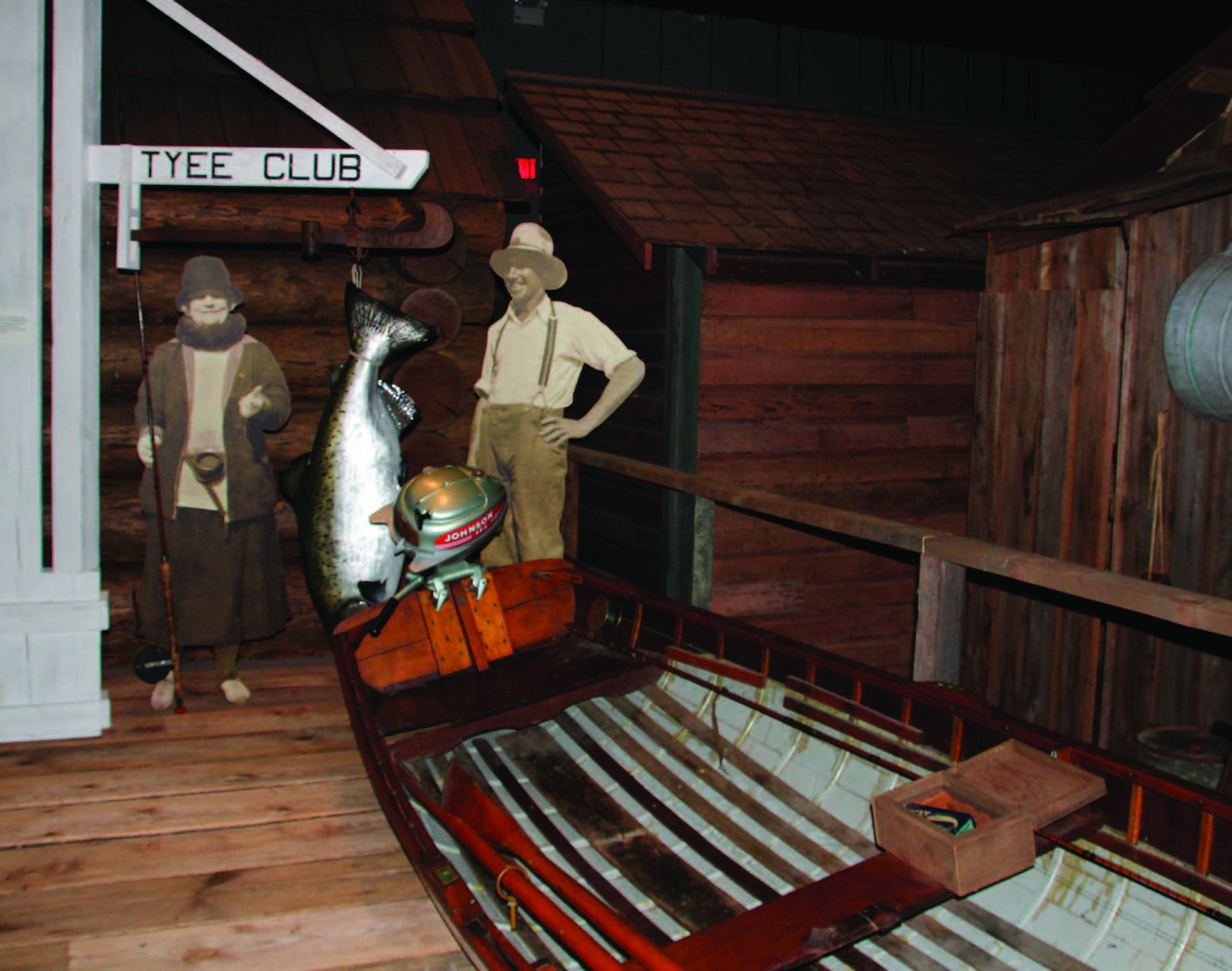
Inside, the museum provides a mix of Indigenous art and crafts with displays of the lifestyles and livelihoods of early European settlers. A small, darkened theatre with bench seats invites visitors to view superb Indigenous carvings displayed along a wall. As spotlights illuminate individual pieces, an elder’s voice narrates the ancient tales that inspired the carvings. Pure magic.
Vitrines display petroglyphs and hats woven from roots and grasses. From there, the museum focuses on the settler history and culture of the town—and its fishing and logging enterprises. We meet two Tyee Club members holding a Tyee next to a lapstrake canoe, surprisingly with a vintage outboard engine attached. An early logging truck, along with a score of chainsaws and other tools recall the rich timber trade that contributed so much to Campbell River’s development. Both a replica float house and a log cabin show early housing and display a 19th century homestead kitchen, and its woodburning cooking stove with clothes drying lines suspended above. The replica log cabin measures 12 x 14 feet—half of the original structure. Thus, entire families lived and worked in an abode measuring 672 square feet— roughly the size of today’s small condos. We can also experience the recreation of the elegant entrance to the Willows Hotel, Campbell River’s first hotel that housed all those Tyee fish hunters as well as loggers. Three versions of this hotel existed—the first two developed by those Swedish Thulin brothers. All three burned down, the last in 1963.
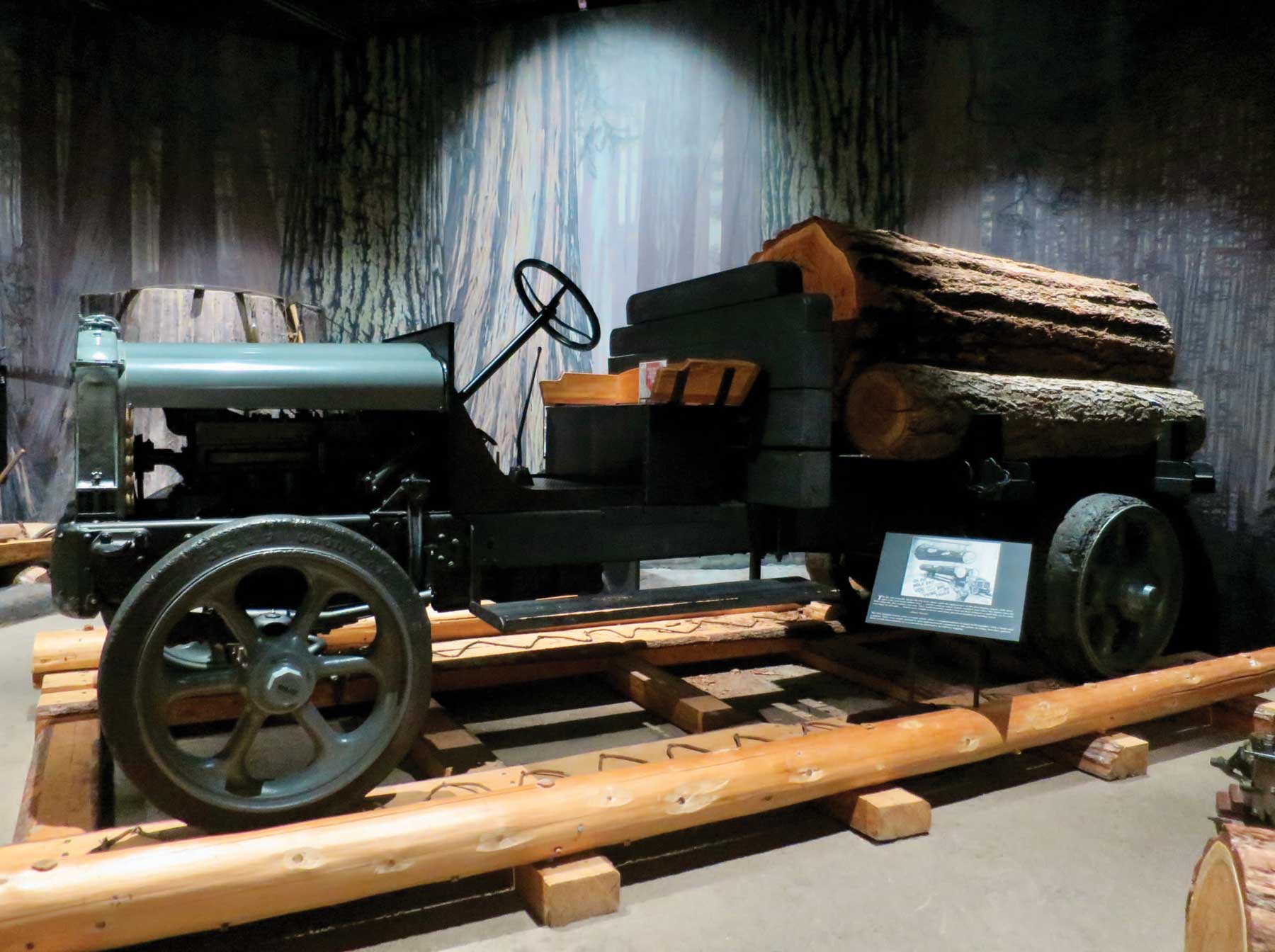
Campbell River is a great place to stop for local exploration, or for provisioning on your way to reconnoitre the Discovery Islands located between the town and BC’s mainland. If you need a boat repair, many marine businesses can fulfill your needs. The city recognizes the Indigenous people that arrived thousands of years before European settlers, but also offers modern facilities for residents and boaters alike.
When You Go
- fishermanswharfcampbellriver.com
- coastmarinalife.com
- discoveryharbourmarina.com
- crmuseum.ca
- Campbell River Cabs: 250-287-8294
- Bee Line Taxi: 250-287-8383
